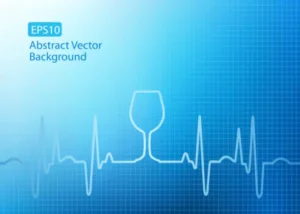People with acquired inebriety often have histories of physical disorders, particularly dyspepsia (i.e., indigestion), bad nutrition, and exhaustion from unhygienic living conditions or stressful work environments. Conversely, hereditary causes include constitutional conditions, such as distinct neurotic and psychopathic disorders that often are traceable to ancestors. In 1893 Kerr, who also was an honorary member of the American association, published the influential textbook Inebriety and Narcomania, which divided inebriates into two groups, periodic and habitual (Kerr 1893). Periodic inebriety is characterized by intense drinking or craving for alcohol interspersed with periods of abstinence. For some alcoholics, the drinking periods are determined by internal cues, such as the onset of menses in women.
Risk factors
- Intermediate familiar alcoholics are typically employed and have a close family member who’s an alcoholic too.
- Folks within the intermediate familial subtype account for 19% of alcoholics.
- The chronic severe subtype makes up the smallest percentage of alcoholics, with only 9.2%.
- This group is characterized by a high level of antisocial behaviors and a significant prevalence of co-occurring mental health issues like antisocial personality disorder, anxiety, and depression.
- This subtype contains the lowest levels of employment, education, and income out of all other subtypes.
This group has one of the lowest education levels of any subtype and also has the lowest employment rate. This group drinks more frequently than any other, although their total alcohol intake is less than the young antisocial subtype. 5 types of alcoholics Two-thirds of this subtype have sought help for their alcoholism at some point, making them by far the most likely to have done so. They often seek help at self-help groups, rehabilitation programs, and detox programs.
- Not surprisingly, alcohol affects just about every aspect of their life.
- They also have high rates of cigarette, marijuana, and cocaine addiction.
What is Young Adult Alcoholism?
They tend to drink less frequently than people of other types (an average of 143 days a year). However, most of their drinking is binge drinking – they drink 5 or more drinks on 73% of their drinking days. This pattern of alcohol use is more likely to be hazardous than non-binging patterns.
Is Alcoholism a Disease? Understanding Alcohol Use Disorder
But they started drinking much earlier than young adult alcoholics — usually by the age of 15 or 16. Researchers found that 21.1 percent of alcoholics fall into this category. Their alcoholism usually manifests by the time they are 18 or 19, and more than half come from families with alcoholism. On average, they drink about 143 days each year, and they typically consume five or more drinks at a time. Few seek help for their drinking, but when they do, they gravitate toward 12-step groups as opposed to private treatment.

It’s a chronic disease marked by an inability to control alcohol consumption. Some people may transition between different alcoholic types based on changing life circumstances, but this probability depends on various factors, including their response to treatment. Of the alcoholism subtypes, functional individuals are less likely to relapse. A study by scientists at the NIAAA, part of the National Institutes of Health (NIH), analyzed 1,484 survey respondents who met specific diagnostic criteria for alcohol addiction.
- Alcoholics within this category generally start drinking at an early age of 19 and also form alcohol dependence as early as 24 years of age.
- Moreover, many don’t believe they have a drinking problem until they start experiencing health issues.
- Chronic severe alcoholics are at high risk for developing liver disease, pancreatitis, and other alcohol-related illnesses.
- Both habitual and periodic inebriety may manifest themselves in different ways, leading to a further classification of inebriates as social and unsocial.

Professional diagnosis
- People in this category-type typically start drinking during their late teens – age 17 and onwards but, develop a dependency on alcohol by the time they reach their 30’s.
- Functional alcoholics expertly balance work and their alcohol use, but this balance is fragile and risky.
- Typology theorists believe this is an inadequate representation of the heterogeneity of etiologies and drinking patterns.
- Nearly half of those within this category smoked before their alcohol abuse and one third came from families with generational alcohol abuse issues.

 Contato por WhatsApp
Contato por WhatsApp
Faça um comentário